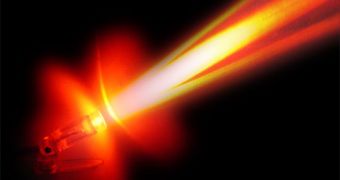Quantum tunneling represents a quantum mechanics phenomenon, which allows a given particle to violate certain classical mechanics principles. For example, in order to extract an electron from the atom, one must contribute with an input of energy equal to or higher than that of the respective electron. However, quantum tunneling allows in some conditions for some particles to penetrate the potential barrier of the atom, even though classical mechanics says this is practically impossible. To give you another example, quantum tunneling in quantum mechanics is in real world like jumping off a cliff and falling upwards. That's absurd!
Nonetheless, the effect is as real as it gets. The phenomenon was first discovered in 1928 by George Gamow, who showed that radioactive alpha decay from a nucleus takes place through quantum tunneling. Shortly after his discovery, Gamow realized that the tunneling effect was not restricted just to an atom's nucleus, and could even be applied to the theory of cosmology of the universe. Today, quantum tunneling is used widely in most of the solid-state electronic devices, such as flash memories and presents great importance to semiconductor and superconductor physics.
Fast information transmission techniques are especially important to engineers all over the world. All you have to do is think about the time it takes to send a single signal to remote areas of space. For example, the Cassini spacecraft orbiting around Saturn is 80 light-minutes away from Earth, meaning it would take one hour and twenty minutes just to send a signal towards it.
Nevertheless, researchers in the field of quantum mechanics argue that they have been successful in sending over a short distance Mozart's Symphony No.40 at a speed of 4.7 times that of the speed of light. Most of the scientists agree that information can be sent at speeds greater than the speed of light through quantum tunneling effects, however it will be distorted beyond recognition, posing no useful application.
The problem is that the experiment which took place back in 1992, cannot be verified, meaning that there is no way to prove that information actually traveled at a faster-than-light speed. What puzzles me even more is how did they actually measure the warp speed of the signal, since comparison with the original signal is next to impossible? Most physicists around the world argue that the two German physicists who conducted the experiment are not necessarily wrong, but they have interpreted the result incorrectly.

 14 DAY TRIAL //
14 DAY TRIAL //